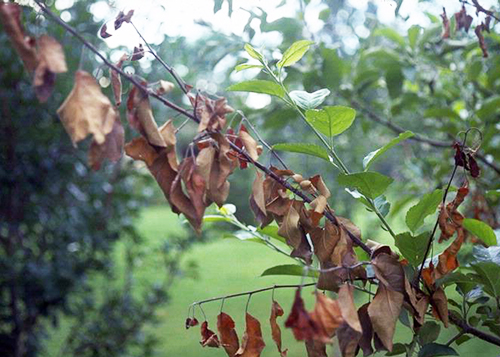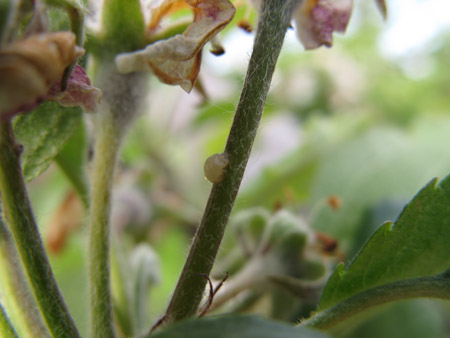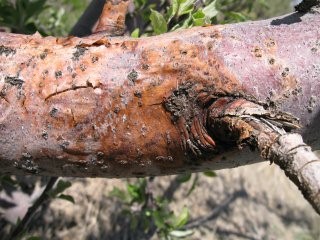Integrated Pest Management
Fire Blight
Erwinia amylovora
Hosts, Symptoms & Signs
- Rosaceae (rose family)
- spring: flowers turn brown and die
- spring: shoots/leaves will start to die back from the tip; the tip is sometimes bent forming a “shepherd’s crook”
- older infections develop cankers on large branches or the main trunk
- cankers look wet when bacteria are oozing from them
Disease Cycle
- overwinters within infected tissues at canker margins
- disease growth begins in spring when the tree breaks dormancy
- bacterial ooze from cankers can be splashed by water or transmitted by bees and flies during pollination
- the bacteria is spread during bloom to blossoms and anytime to shoots through natural openings or damage
- trees remain susceptible to infection until new growth stops; succulent growth (e.g., root sprouts) can be infected anytime
IPM Recommendations
- Manage trees to improve or maintain overall health.
- Prune infected shoots 12 inches below the symptomatic area to remove the bacteria that have moved beyond the symptomatic part of the shoot.
- Disinfect pruning tools between cuts using a 10% bleach or 70% alcohol solution or disinfecting wipes. If tools are not disinfected, fire blight could be spread to healthy plants during pruning.
- Apply copper products during the dormant season on cankers.
- Apply antibiotics in spring to prevent blossom infections.
- Visit climate.usurf.usu.edu/traps to view the fire blight risk forecasting system to assess risk for ornamental trees.




